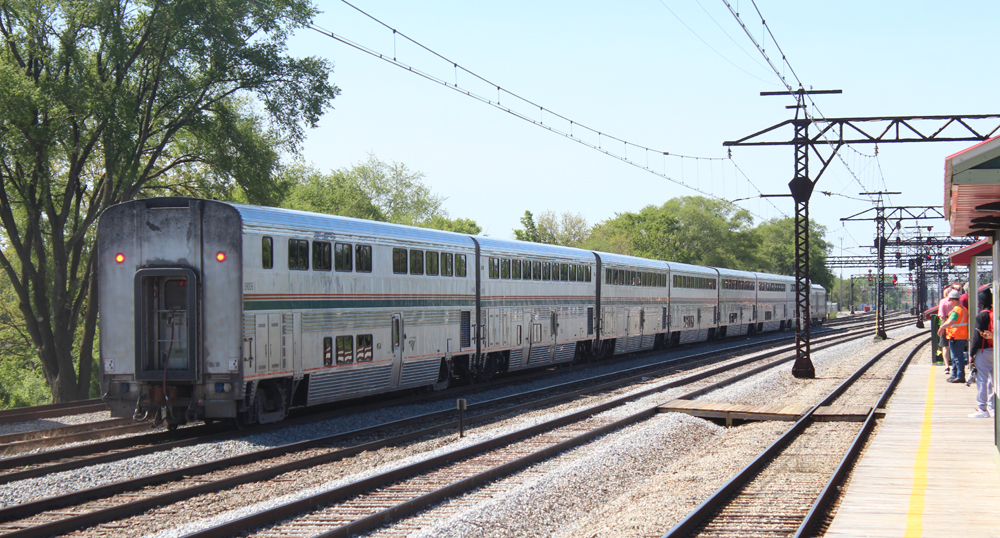
Second of two parts
Part 1 of this report, available here, examined how lack of capacity has adversely impacted Amtrak’s long-distance trains compared with the mobility the company has been able to provide in the Northeast Corridor. Part 2 considers possible solutions.
Foreseeable shortfall
The shortage of active bilevels was evident when deployment plans for fiscal 2023 were devised in mid-2022. The need was clearly exacerbated by high-profile derailments of the Empire Builder in 2021 and Southwest Chief in 2022.
Another contributing factor: no imminent solution to Canadian National’s years-long demand requiring seven Superliners — not other types of Amtrak passenger cars — to operate on two Chicago-Carbondale, Ill., round trips plus the City of New Orleans. CN says this is necessary to achieve reliable highway grade crossing and signal shunting on its route in Southern Illinois.
As noted in Part 1, the City of New Orleans clearly benefits from this dictate, while other long-distance trains suffered where Amtrak alone calls the shots. The company gets paid by states, and thus is obligated to fill any voids caused by missing or late-delivered equipment, such as the dearth of serviceable Midwest Siemens Venture coaches. That’s why “axle count” Superliner transition sleepers and dining cars are routinely deployed on the Chicago-Carbondale daytime Saluki and Illini.
Adding one car to a cross-country service line translates to a need for five cars to cover all trainsets (six in the case of the California Zephyr, four for the Coast Starlight, and just three for the Capitol Limited). Ensuring enough equipment is roadworthy requires a top-to-bottom commitment to alter existing maintenance procedures to make that happen.
Much of the rolling stock removed from service beginning with reduced frequencies in October 2020 remains sidelined because required four-year brake system rebuilds were curtailed. Amtrak has claimed it now lacks enough skilled personnel and facilities to quickly restore these cars to active duty.
Bulking up the Cascades
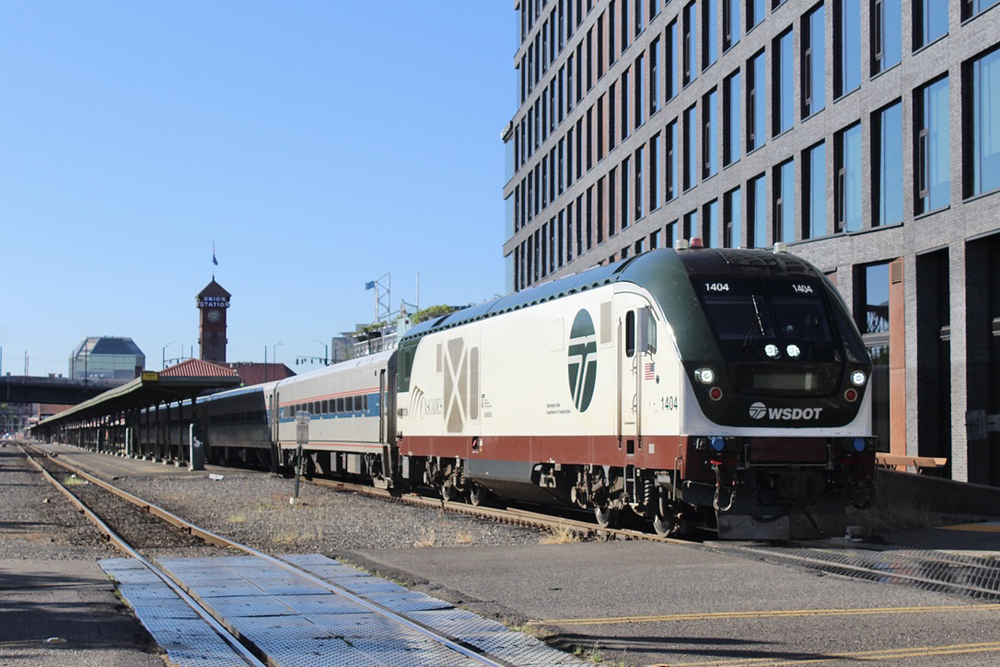
However, the company was able to marshal maintenance resources when it needed to provide Horizon coaches and cafes for additional Amtrak Cascades capacity and another round-trip from Portland, Ore. to Vancouver, B.C.
Horizon coaches and cafes in need of mandated four-year truck and brake-part rebuilding, a process known as “Clean, Oil, Test and Stencil,” or COT&S in railroad parlance, were hauled out of storage. They were sent to Amtrak shops where special truck-brake maintenance lines were set up to prioritize these cars’ return to service. In addition to two Oregon-owned Talgo trainsets, four three-car Horizon sets protecting the November 2022 schedule grew to six four-car sets for the March 2023 expansion, a net increase of 12 cars.
In a message sent to more than 100 people with Amtrak email addresses, a manager thanked “everyone who has had a part in in bringing the required Horizon equipment up to speed for the second round trip to Vancouver, B.C., including movement to [Los Angeles], Ilene Lara and the team in [Los Angeles] for their devoted work on COT&S and defect repair in preparation for the Horizon cars to enter service.”
It was clearly perceived to be an extraordinary endeavor. But if management sought to capture additional revenue by meeting surging intercity demand, this initiative might have been implemented earlier for Superliners or continued after the company’s commitment to Washington State was completed. Instead, according to sources familiar with current practices, maintenance and overhaul plans for fiscal 2023 have remained largely unchanged.
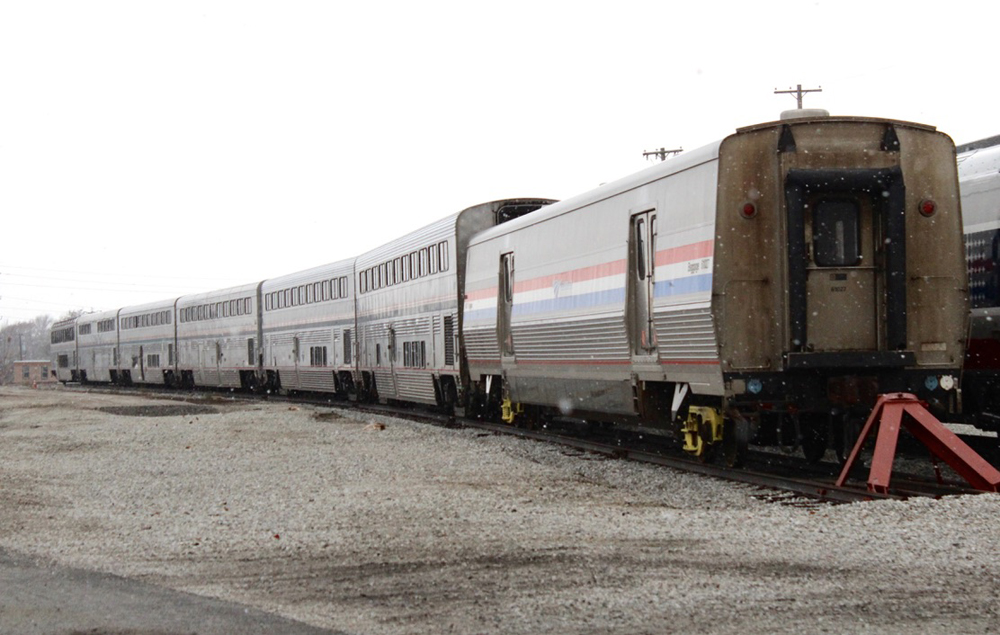
Pre-planned Superliner overhauls continue at Amtrak’s Beech Grove Maintenance Facility. Much-needed top-to-bottom interior and mechanical refurbishment as well as the COT&S work are included in the process. Front-line employees report to Trains News Wire sources, however, that parts shortages, often involving truck and brake rebuilding, continue to delay task completion. That reality would make it difficult to add a separate line for sidelined cars not scheduled for a thorough renovation.
Revenue foregone, trips not taken, and Amtrak’s ability to capture heavy travel demand outside the Northeast Corridor has thus far been a missed opportunity. But the trajectory might be reversed now with a change of course.
Devoting maintenance resources specifically to getting Superliners, as well as idle Viewliners, into service is a short-term solution that may disrupt management’s 2023 planned cost structure, but an immediate course change can pay dividends with increased revenue later in the year and into 2024, when more completely overhauled equipment becomes available.






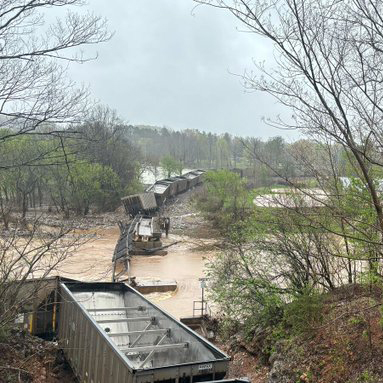

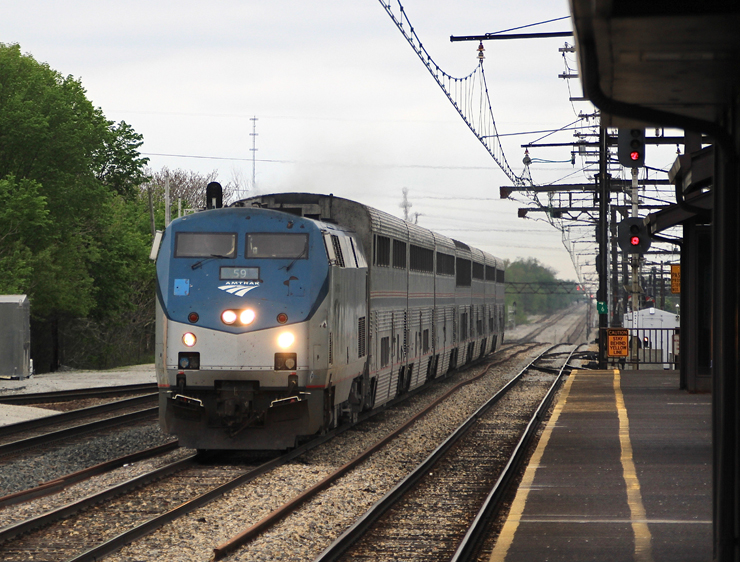
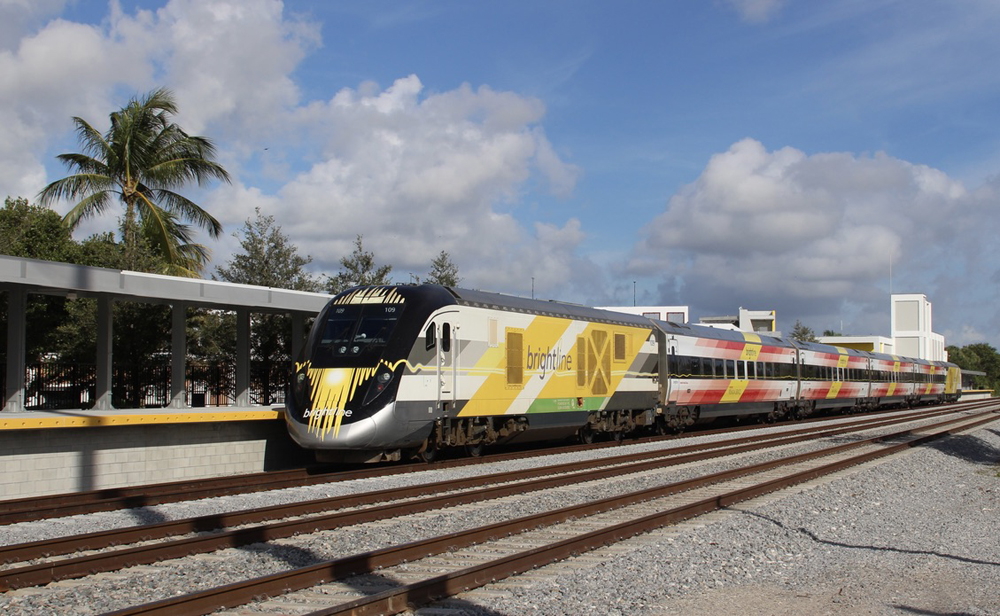




This report just shows how much Amtrak has dropped the ball on maintenance issues. If they do not improve keeping their existing cars service ready then how can the justify new cars. Amtrak is supposed to serve the whole country not just the northeast or other higher population areas. If they expect federal funds to operate they must also do a good job servicing the whole country using their long distance trains. Most likely this crisis was created because of the old Anderson administration. The latest managers seem to be taking more interest in the long distance trains. But issues like this will take time to fix.
If Amtrak management would spend half as much time focused on maintaining the equipment and growing the business as they do in inventing new and tiresome excuses, we’d be back to reliable, ongoing maintenance supply chain flows and pre-Covid consists with the only equipment sidelined being those cars too severely damaged to be repaired and held as parts cars. And what with Covid no longer an excuse, where are the Amtrak-sponsored technical school training programs to produce an ongoing stream of qualified service personnel? Other industries do it; why is Amtrak still in the dark ages?
If Amtrak didn’t layoff any maintenance workers during covid why isn’t there more equipment availability?
Something is rotten in Denmark!
There is a congressional “get together” next week with Amtrak. It will be interesting if Mr. Gardner is asked about the maintenance backlog and the many cars that were purchased but not put in service.
Remember back in 2002 when the Auto Train derailed in Florida? It took a mere few days for equipment personnel to get the Auto train rolling again by hastily assembling numerous ready to roll Superliner reserved as protect equipment and were able to create another trainset. They were more prepared for that than derailment involving the Southwest Chief, which has a much shorter consist. Amtrak was forced to remove one coach from the Capitol Limited and had to suspend one eastbound Chief due to a lack of available equipment. How many trains were cancelled last summer because of a trainset having issues and no protect equipment available and reports of sleeping car customers being downgraded to coach happened? Amtrak has had two years to get all those idle Superliners back on the rails. They are out of excuses for not having most of that equipment returned to service and the continued long distance line sellouts clearly shows the dire need to step up efforts to return those stored Superliners to service.
Would the current lack of spare parts be alleviated if Amtrak could be allowed to use foreign-made spares? I imagine that there may be spare parts factories in Europe that would gladly produce such spare parts, if this were allowed by changing certain “must be made in America” rules. In particular, the Finnish-made double-decker sleeper cars used on their “Santa Claus Express” passenger trains look to be ideal for potentially replacing the aged SuperLiner fleet. The wider (Russian) gauge equipment used in Finnish rail cars would of course need to be changed to the “Standard” gauge used in the U.S..
Are the parts shortages the front line employees identified unique to Superliners? If so, why? If not, what pressure is AMTRAK management putting on its suppliers?
Whar DOES CN use instead of 7 Superliners to shunt signals?
Back in the day, a single RDC was required to have “excitation gear” to reliably shunt signals. Without it, the car had to be protected by manual bock signals behind it, and approach all grade crossings prepated to stop and flag. An RDC-1 weighs 118,300 lbs without passengers.
Is there any kind of “excitation gear” Amtrak can use to shunt CN’s signals?
And who approved this substantial degradation in a vital safety sysyem?
Goodness me? Is Amtrak practicing its own version of Precision Scheduled Railroading or just a continuance of the same failed policies enacted since the firing of David Gunn for trying to do what this report calls for?
Crying the old “we don’t have enough trained maintenance folks or crews to do the work will not make any friends with the train riding public outside of the catered to Northeast Corridor. Its far past time for Amtrak to fulfill it government legislated mandate to the whole country by quit making excuses and using funny money accounting to cover the real problems causing all these continuous issues that never seem to get solved…
Has anyone demanded Canadian National prove that it takes 7 Superliners to make the switches and gates work? Also, what did CN do after it acquired Illinois Central that would have required such a load? And why does it take 7 Superliners as opposed to a loaded freight car with the weight of 7 Superliners?
My thoughts exactly…
Why is the Rail Passengers Association not applying pressure through social media and by working with elected officials.
The majority of Rail Passengers members are very invested in the national network but Bob Johnston seems to be a better advocate than all the staff at Rail Passengers Association.
RPA has a hard working staff that absolutely does advocate on this and other issues affecting passengers. The benefits of posting “we’re angry about ” or “Amtrak management must be fired!” on social media while it might get some likes from people who are mad about these issues is quite limited and can also create a hostile relationship between advocates and Amtrak itself and there are many issues where cooperation with Amtrak is important. Thoughtful advocacy is often engaging directly with policy makers, sometimes behind the scenes. I can personally assure this is going on aggressively.
Just more of the same old Amtrak where “management” is a punchline.